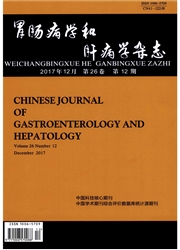

 中文摘要:
中文摘要:
目的在生物材料上进行胚胎干细胞(embryonic stem cell,ESc)的三维培养和肝细胞定向诱导分化,评价其用于构建肝组织工程的可行性。方法胰酶消化生物反应器悬浮旋转培养5天的拟胚体(embryoid bodies,EBs),将细胞悬液与细胞外基质Matrigel 1∶1混合接种于聚乳酸(poly-L-lactic acid,PLLA)和聚乙醇酸(polyglycolic acid,PGA)共聚合三维支架内,用系列诱导剂定向诱导肝细胞分化。镜下动态观察ES细胞的培育和生长情况,并用HE染色、糖原染色、免疫荧光染色检测组织结构形态、肝细胞功能及其肝细胞标志物白蛋白(ALB)的表达。结果显微镜和扫描电镜见ESc可在聚合支架材料上三维立体状态生长,随培养时间不断增殖,交织成网状。HE染色提示形成了致密的类肝组织样结构。糖原染色和免疫荧光染色结果提示形成的类肝组织表达Alb,并有大量糖原存在。结论可在PLLA/PGA三维支架材料及Matrigel上培养ESc和定向肝细胞诱导分化,长时间培养后可形成类肝样组织。
 英文摘要:
英文摘要:
Objective To investigate the possibility of construction of liver tissue enginecring by the three-dimensional(3D) culture and differentiation of embryonic stem cells(ESc) into hepatocytes on biomaterials.Methods Cells derived from 5 days embryoid bodies(EBs),forming in a rotary microgravity bioreactor,were mixed with matrigel and immediately seeded in the biodegradable polymer scaffold composed of poly-L-lactic acid(PLLA) and poly-glycolic acid(PGA).Exogenous growth factors and hormones had been added sequentially to promote hepatic histogenesis.Cell growth and morphology of ESc in 3D culture were examined by microscope and scanning electron microscopy(SEM).Tissues structures,albumin expression and glycogen production were analyzed by Hematoxylin and Eosin(HE) staining,immunofluorescence staining and periodic acid-Schiff(PAS) staining after 3D culture and differentiation.ResultsMicroscopy and SEM showed that ES cell-derived cells grew in a well 3D net as well as irregular cell aggregates forming in polymer scaffolds and increasing in density over time.Liver-like tissue was visible in the HE staining sections.Immunocytochemistry staining and PAS staining revealed that the differentiating ESc expressed Alb and producted glycogen.Conclusion ES cells could be cultured and differentiated into hepatocytes within PLLA/PGA polymer scaffold along with Matrigel and proper inductors.Live-like tissue could be achieved in this 3D culture.
 同期刊论文项目
同期刊论文项目
 同项目期刊论文
同项目期刊论文
 期刊信息
期刊信息
